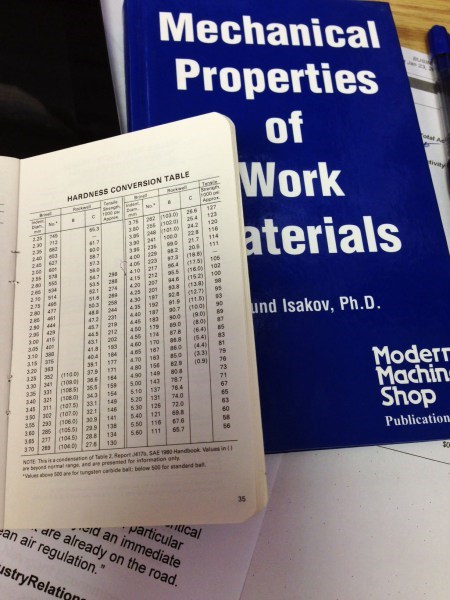Conversion of Hardness and Tensile Strength in Steels
Use of conversion charts and factors to convert hardness values in steels is widely done and typically based on ASTM methodology.

SAE ferrous materials manual lists ASTM E140 standard hardness conversion tables for metals.
In non-austenitic steels and alloys, ASTM Method E140 standard hardness conversion tables for metals are the authoritative standard.
- Conversion of values is only an approximate process, because of the different combination of material properties measured by each test;
- Converted values are suitable for use in establishing specification limits; and
- Converted values are subordinate to actual test values.
ASTM Method E140 paragraph 1.12 caveat:
“Conversion of Hardness Values should be used only when it is impossible to test the material under the conditions specified, and when the conversion is made. It should be done with discretion and under controlled conditions. Each type of hardness test is subject top certain errors, but if precautions are carefully observed, the reliability of hardness readings made on instruments of different indentation type will be found comparable. Differences in sensitivity within the range of a given hardness scale (Rockwell B for example) may be greater than between two different scales or types of instruments. The conversion of values, whether from the tables or calculated from the equations, are only approximate and may be inaccurate for specific application.”
If your work requires a more detailed analysis of material hardness and correlation to mechanical properties, I recommend “The Mechanical Properties of Work Materials” by Dr. Edmund Isakov, published by Hanser Gardner Publications.
Originally posted on PMPASpeakingofPrecision.com blog.












.jpg;maxWidth=300;quality=90)


